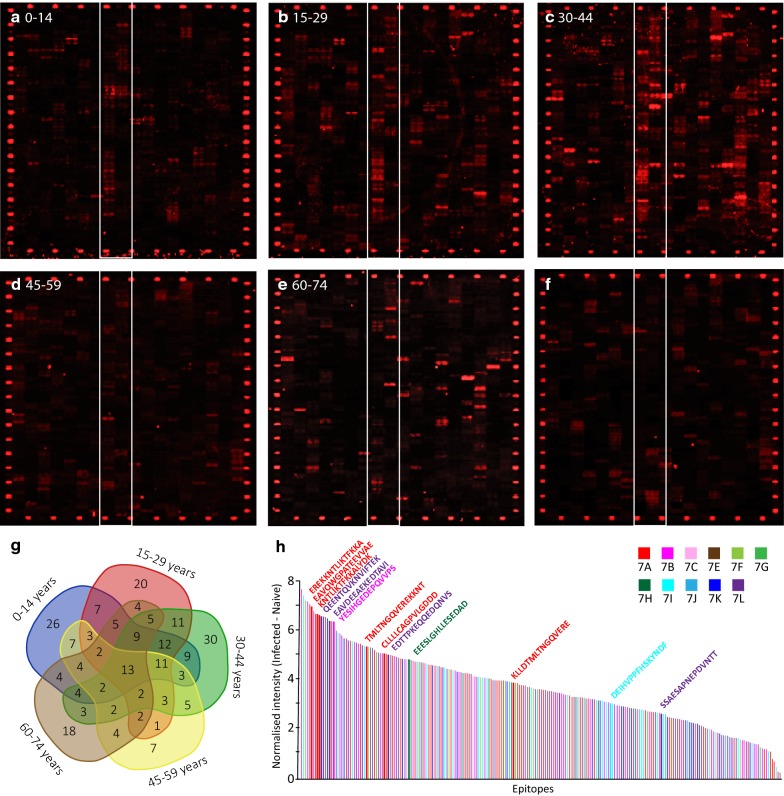Fig. 5.
Mapping of putative B-cell epitopes across 12 PvMSP-7 paralogs by peptide microarray. Plasma from naturally infected vivax malaria patients was applied to a custom peptide microarray to determine linear B-cell epitopes. The microarray consisted of 2346 spots, representing 1173 peptides (each 13 amino acids) derived from the predicted protein sequences of 12 PvMSP-7 paralogs, overlapping by one amino acid and spotted in duplicate. a–e Fluorescent response following incubation of the peptide microarray with patient plasma, pooled by age in years: 0–14 (a), 15–29 (b), 30–44 (c), 45–59 (d), 60–74 (e), and application of a Cy3 (red) conjugated, secondary goat anti-human IgG antibody. Each spot on the peptide microarray corresponds to one peptide. f Negative control consisting of plasma derived from naïve patients living in malaria-free areas. Control peptides (HA) are located around the edge of the array and are stained with Cy3 (red) conjugated anti-HA antibody. For comparison, the strongest responding spots are highlighted between the white lines. g A Venn diagram showing the overlap in predicted linear B-cell epitopes across five patient age groups. 13 peptides that gave significant responses in all experimental groups were observed to be present in all age groups. h Peptides that gave fluorescent responses significantly greater than the naïve control in one or more age groups (N = 236) are presented in order of response intensity and shaded by PvMSP-7 paralog. The predicted amino acid sequence of the epitope is given for 13 peptides that were significant in all five age groups

